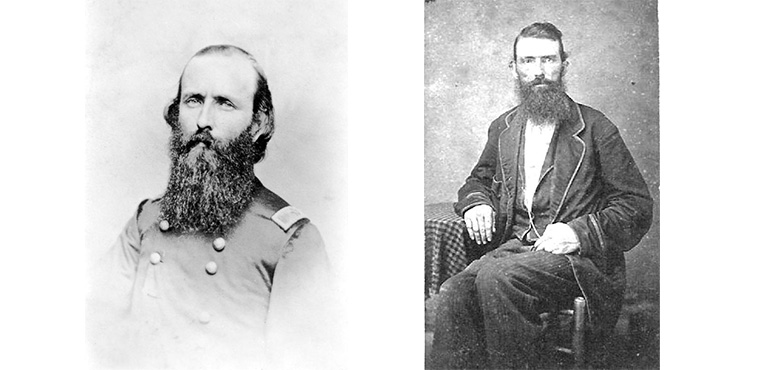By Dr. Curtis Varnell
“Heaven born but hell bound,” a description offered by one lady as the bushwhackers raided her
home. Bushwhackers were the plague for the families left behind while their menfolk were
fighting the battles of the Civil War. The bushwhackers, often no more than common criminals
with loyalty to neither side, pillaged the countryside taking food and money from those they
encountered.
By late 1863, Arkansas was a state divided with the Union occupying most of the larger towns in
Northern Arkansas and the Confederacy occupying the southern part of the state. Bushwhackers
as well as raiding groups from both armies confiscated food, stole livestock, and in many cases
burned down the homes of any individual thought to be disloyal to whatever cause was
supported by those doing the raiding. Vast tracts of rural farm areas could be described as the
burnt over area.
Thousands packed their remaining belongings and fled their homes. Wagon trains of
Confederate sympathizers, with their belongings and slaves, headed south to Texas to wait out
the war. Those of the Union persuasion headed to Fort Smith or Fayetteville where they could
expect military protection and assistance. Facing further hardship, many attempted to flee
further north into the Union states. William Ferguson was forced to flee from his Scott County
home after he was severely wounded by bushwhackers. After a few weeks in the Fort Smith
garrison, he decided to travel to Southern Illinois to stay with his family. If war wasn’t enough,
during the travel his wife and two of his children died of measles and were buried on the banks
of the White River. Two other relatives disappeared after a bushwhacker attack and were never
seen again. Similar stories occurred throughout Arkansas. In Greenwood, Eliza Turner was
captured by bushwhackers wearing Union uniforms. He was taken to a nearby barn, beaten, and
then hanged. His family buried him beneath a stone labeled Assasinated, June 8, 1864 and
headed to safety in Kansas. The family never returned to Arkansas.
With atrocities committed across the region, agriculture ground to a standstill. Lack of food and
supplies resulted in the starving times of 1863 and 1864. Seeking a solution, Col. Marcus
Harrison of Fayetteville came up with a controversial plan to form fortified colonies across
Arkansas to house and feed anyone willing to take an oath of allegiance to the U.S. The original
plan was to form a colony that would consist of at least 50 men capable of bearing arms and
settle they and their families on large tracts of abandoned land where they could subsist and raise
crops. A blockhouse fort was to be constructed at each of these posts.
Four colonies were created in Sebastian and Crawford counties and seventeen others in
Washington, Madison, and Benton counties. The colonies grew a number of crops including
potatoes, onions, wheat, and corn and were very successful in providing protection and
subsistence to their inhabitants.
It is interesting to note that many of these “post” cities developed into communities and small
towns, even after former inhabitants returned to claim their land after the war. Area
communities that served as “post” towns were Elkins, Farmington, Pea Ridge, War Eagle,
Huntsville, and Union Valley near Prairie Grove. As the war ended, lieutenant George Stated;
‘the time is not too far distant when we will return home, beat our swords in plow shears, and our
spears into pruning hooks.” Driving through these peaceful communities today, one realizes that
those days have arrived.







